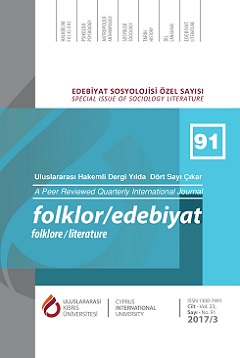Çevresel Medya İçeriklerinin İnşasi: National Geographic Türkiye Dergisi Örneği
The Construction of Environmental Media Contents: The Case of National Geographic Turkey Magazine
Author(s): Çağrı EryilmazSubject(s): Media studies, Environmental Geography, Applied Geography, Environmental interactions
Published by: Uluslararası Kıbrıs Üniversitesi
Keywords: environment; environmental problems; media; magazine; National Geographic;
Summary/Abstract: This study aims to analyse the construction of environmental problems of National Geographic Turkey magazine. National Geographic magazine presents important environmental problems like melting glaciers, deforestation, and the extinction of species like gorilla to 60 millions of people in 41 languages for more than a century. In this study, 7 environmental articles published between 2001 and 2016 are examined through qualitative content analysis. The categories of qualitative content analysis are the six approaches of narration and five key factors of effective environmental media content developed by John Hannigan. Findings show the dramatic elements like the narration of gorilla killings as a murder case and the story of native and sorcerer beside the catastrophic themes like drying of Aral Lake and turning the local population into refugees. Conflicting views of different sides are presented in issues like raising exotic animals, settlements in valleys and protection national parks from the effects of climate change. In conclusion, the efficient narration style of magazine consisting of science, disaster and conflict themes includes dramatic elements, scientific and institutional references and implementations for solutions.
Journal: Folklor/Edebiyat
- Issue Year: 23/2017
- Issue No: 91
- Page Range: 125-142
- Page Count: 18
- Language: Turkish

